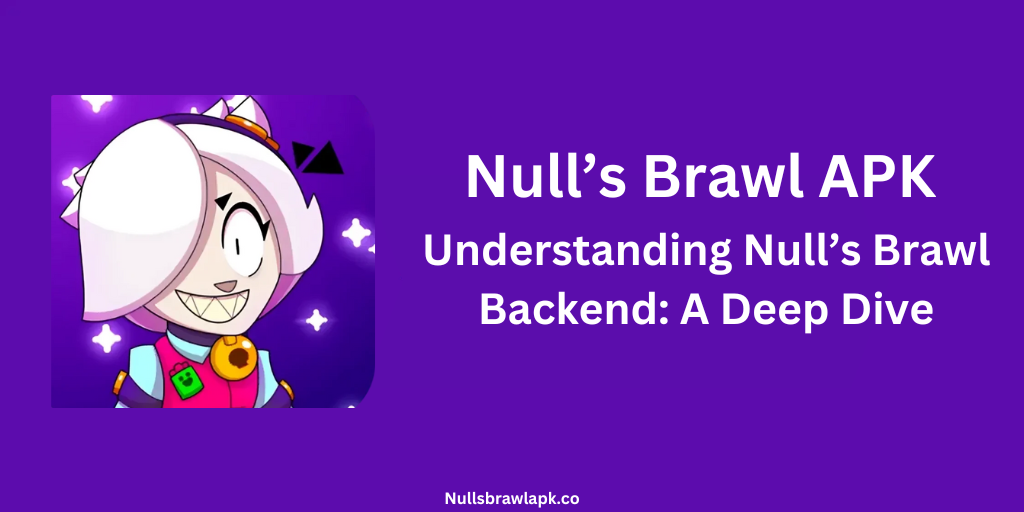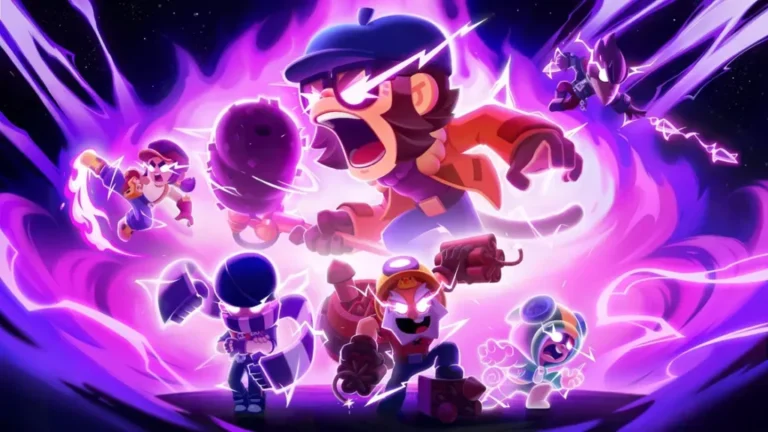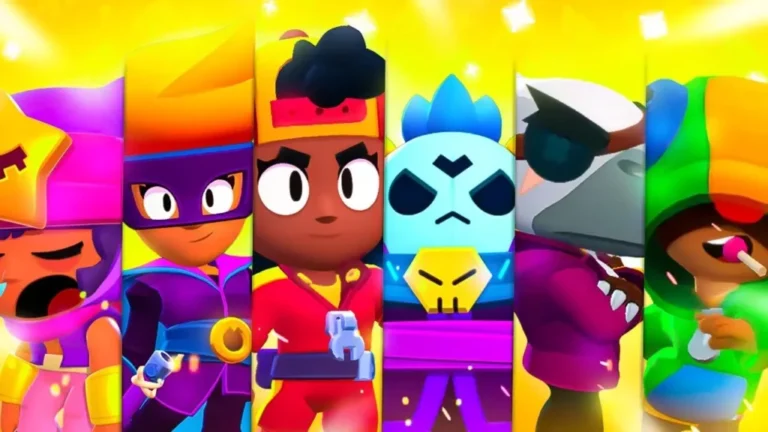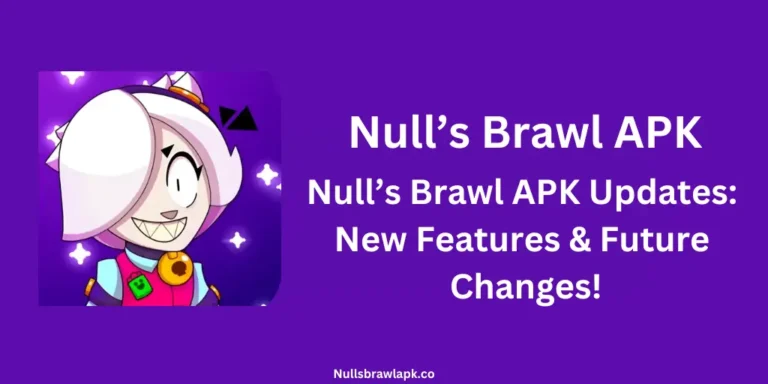Understanding Null’s Brawl Backend: A Deep Dive
Null’s Brawl is a popular modified version of the Brawl Stars game that offers an enhanced gaming experience with unlimited resources, unlocked brawlers, and no restrictions. While players enjoy the freedom to explore the game to the fullest, the backbone of Null’s Brawl—its backend infrastructure—plays a vital role in ensuring the smooth running and stability of the game. In this article, we will explore what the backend of Null’s Brawl entails, how it works, and why it is crucial for delivering the exceptional experience players enjoy.
What is Null’s Brawl?
Null’s Brawl is an unofficial version of Supercell’s popular mobile game Brawl Stars. This modified version is designed to give players a way to enjoy the game without spending money or grinding for in-game currency. Unlike the official version of Brawl Stars, Null’s Brawl offers unlimited gems, coins, and all brawlers unlocked from the start. However, behind all the fun lies a powerful backend system that ensures the game runs smoothly, offers features like Null’s Connect for data synchronization, and maintains security.
The Importance of a Strong Backend in Null’s Brawl
The backend of any game, including Null’s Brawl, is the invisible part of the system that controls how data is stored, processed, and communicated between the game server and the player’s device. The backend handles essential functions such as user authentication, matchmaking, leaderboard tracking, game state synchronization, and in-game purchases (if applicable). In Null’s Brawl, the backend plays an even more critical role since it handles the modified features of the game, such as unlimited resources and custom brawler configurations.
Key Functions of the Backend
1. User Authentication and Account Management
One of the primary roles of the backend in Null’s Brawl is to handle user authentication and account management. When you log into Null’s Brawl, the backend ensures that your account information is correctly verified. This is particularly important for Null’s Connect, which synchronizes your game progress and settings across devices. Without a reliable authentication system, players wouldn’t be able to access their game data, which is crucial for maintaining progress over time.
2. Data Synchronization with Null’s Connect
Null’s Connect is a unique system created for Null’s Brawl to store and sync player data across devices. The backend facilitates the synchronization of your progress, achievements, brawler upgrades, and resources (gems, coins, etc.) across multiple devices. This ensures that if you log in on a new phone or tablet, your game data will be updated and ready to go without any loss.
3. Game State Management
The backend system is responsible for managing the current game state, such as keeping track of the player’s brawler stats, ongoing matches, and events. When you upgrade a brawler or earn rewards, the backend ensures that these changes are reflected in your game and synced across platforms.
4. Matchmaking and Multiplayer Coordination
Since Null’s Brawl features both single-player and multiplayer modes, the backend also handles matchmaking. For multiplayer modes, the backend ensures that players are paired with others of similar skill levels and that their game states are updated in real-time. This involves managing player queues, match creation, and the transfer of data between player devices during active matches.
5. Event and Reward System
Null’s Brawl frequently hosts in-game events where players can participate in challenges or cooperative activities. The backend ensures that these events are properly triggered and that rewards are distributed fairly. Whether you’re participating in a limited-time event or completing a daily challenge, the backend tracks your progress and delivers rewards accordingly.
Backend Infrastructure: How It Works
1. Game Servers
At the core of the Null’s Brawl backend are the game servers, which host all the data and logic required for the game to run. These servers manage player accounts, store in-game items, process real-time match data, and facilitate communication between users. The servers also enable features like online multiplayer and synchronization between devices.
Most game servers run on cloud infrastructure, which allows them to scale as needed. For example, when there are a large number of players online, additional resources are allocated to prevent lag or downtime.
2. Database Management
The game’s database is where all player-related data, such as progress, unlocked brawlers, and currency balances, is stored. The backend uses a structured database to efficiently store and retrieve data when needed. For example, when a player earns coins or gems, the database updates their balance in real-time.
Additionally, the backend maintains backups of player data in case of system failure. This ensures that if anything goes wrong, player progress isn’t lost, and players can recover their data.
3. Game Logic and APIs
The game logic defines the core rules and mechanics of Null’s Brawl. Whether it’s upgrading brawlers or participating in events, game logic is managed by the backend to ensure fairness and consistency.
APIs (Application Programming Interfaces) are used to enable communication between the game client (your device) and the backend. APIs allow the game to request information from the backend, such as retrieving updated player data or submitting progress.
4. Security and Anti-Cheat Systems
Security is a crucial aspect of any game, especially when it involves online multiplayer. Null’s Brawl’s backend includes anti-cheat systems to prevent players from using hacks or unauthorized modifications to gain an advantage. These systems are designed to detect suspicious activities like altered game data or unauthorized API calls.
The backend also ensures that sensitive player data, such as personal information or payment details (if any), is encrypted and stored securely.
Challenges Faced by the Backend
1. Scalability
As Null’s Brawl grows in popularity, the backend must scale to accommodate an increasing number of players. The game servers need to handle a large number of concurrent players, ensuring smooth performance even during peak hours. To address this, developers rely on cloud-based infrastructure that can scale resources dynamically based on player demand.
2. Latency and Performance Optimization
Latency refers to the delay between sending and receiving data between the client and the backend. A high level of latency can cause lag during matches, affecting gameplay. To maintain a smooth gaming experience, the backend team constantly works on optimizing the server-client communication and minimizing latency.
3. Maintaining Fair Play
Since Null’s Brawl is a modified version of Brawl Stars, the backend team must ensure that the game remains balanced and fair. This involves preventing cheating through hacks or exploits while ensuring that legitimate players can progress without interference.
4. Handling Data Synchronization Issues
One of the biggest challenges in a game like Null’s Brawl is ensuring that all devices are perfectly synced. For players using Null’s Connect to sync their progress, it’s crucial that the data across devices remains consistent. Any discrepancies in synchronization could result in lost progress or rewards.
Future of Null’s Brawl Backend
As technology advances and more players join the Null’s Brawl community, the backend infrastructure will need to evolve to meet new demands. Developers are likely to focus on the following areas to improve the backend:
- Improved Security: With the rise of online threats, ensuring that player data and gameplay remain secure will be a top priority.
- Better Matchmaking: Enhancing the matchmaking system to ensure more balanced and competitive matches.
- Faster Data Syncing: Reducing synchronization delays for a smoother experience across devices.
Conclusion
The backend of Null’s Brawl is an essential component that ensures the game runs smoothly and that players can enjoy an uninterrupted and enjoyable gaming experience. From handling user authentication and data synchronization to managing game logic and security, the backend plays a pivotal role in delivering the unique features of Null’s Brawl.
While players are typically unaware of the technicalities behind the game, it is important to understand that a strong and efficient backend is what keeps the game running seamlessly. As Null’s Brawl continues to grow, its backend will evolve to meet the demands of its ever-expanding player base, ensuring that the game remains a top choice for mobile gamers around the world.







